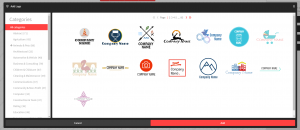Big data — the cutting edge of modern marketing or an overhyped buzzword? Columnist Kohki Yamaguchi dives in to some of the limitations of user-centered data.

As everyone knows, “big data” is all the rage in digital marketing nowadays. Marketing organizations across the globe are trying to find ways to collect and analyze user-level or touchpoint-level data in order to uncover insights about how marketing activity affects consumer purchase decisions and drives loyalty.
In fact, the buzz around big data in marketing has risen to the point where one could easily get the illusion that utilizing user-level data is synonymous with modern marketing.
This is far from the truth. Case in point, Gartner’s hype cycle as of last August placed “big data” for digital marketing near the apex of inflated expectations, about to descend into the trough of disillusionment.
It is important for marketers and marketing analysts to understand that user-level data is not the end-all be-all of marketing: as with any type of data, it is suitable for some applications and analyses but unsuitable for others.
Following is a list describing some of the limitations of user-level data and the implications for marketing analytics.
1. User Data Is Fundamentally Biased
The user-level data that marketers have access to is only of individuals who have visited your owned digital properties or viewed your online ads, which is typically not representative of the total target consumer base.
Even within the pool of trackable cookies, the accuracy of the customer journey is dubious: many consumers now operate across devices, and it is impossible to tell for any given touchpoint sequence how fragmented the path actually is. Furthermore, those that operate across multiple devices is likely to be from a different demographic compared to those who only use a single device, and so on.
User-level data is far from being accurate or complete, which means that there is inherent danger in assuming that insights from user-level data applies to your consumer base at large.
2. User-Level Execution Only Exists In Select Channels
Certain marketing channels are well suited for applying user-level data: website personalization, email automation, dynamic creatives, and RTB spring to mind.
In many channels however, it is difficult or impossible to apply user data directly to execution except via segment-level aggregation and whatever other targeting information is provided by the platform or publisher. Social channels, paid search, and even most programmatic display is based on segment-level or attribute-level targeting at best. For offline channels and premium display, user-level data cannot be applied to execution at all.
3. User-Level Results Cannot Be Presented Directly
More accurately, it can be presented via a few visualizations such as a flow diagram, but these tend to be incomprehensible to all but domain experts. This means that user-level data needs to be aggregated up to a daily segment-level or property-level at the very least in order for the results to be consumable at large.
4. User-Level Algorithms Have Difficulty Answering “Why”
Largely speaking, there are only two ways to analyze user-level data: one is to aggregate it into a “smaller” data set in some way and then apply statistical or heuristic analysis; the other is to analyze the data set directly using algorithmic methods.
Both can result in predictions and recommendations (e.g. move spend from campaign A to B), but algorithmic analyses tend to have difficulty answering “why” questions (e.g. why should we move spend) in a manner comprehensible to the average marketer. Certain types of algorithms such as neural networks are black boxes even to the data scientists who designed it. Which leads to the next limitation:
5. User Data Is Not Suited For Producing Learnings
This will probably strike you as counter-intuitive. Big data = big insights = big learnings, right?
Wrong! For example, let’s say you apply big data to personalize your website, increasing overall conversion rates by 20%. While certainly a fantastic result, the only learning you get from the exercise is that you should indeed personalize your website. While this result certainly raises the bar on marketing, but it does nothing to raise the bar for marketers.
Actionable learnings that require user-level data – for instance, applying a look-alike model to discover previously untapped customer segments – are relatively few and far in between, and require tons of effort to uncover. Boring, ol’ small data remains far more efficient at producing practical real-world learnings that you can apply to execution today.
6. User-Level Data Is Subject To More Noise
If you have analyzed regular daily time series data, you know that a single outlier can completely throw off analysis results. The situation is similar with user-level data, but worse.
In analyzing touchpoint data, you will run into situations where, for example, a particular cookie received – for whatever reason – a hundred display impressions in a row from the same website within an hour (happens much more often than you might think). Should this be treated as a hundred impressions or just one, and how will it affect your analysis results?
Even more so than “smaller” data, user-level data tends to be filled with so much noise and potentially misleading artifacts, that it can take forever just to clean up the data set in order to get reasonably accurate results.
7. User Data Is Not Easily Accessible Or Transferable
Because of security concerns, user data cannot be made accessible to just anyone, and requires care in transferring from machine to machine, server to server.
Because of scale concerns, not everyone has the technical know-how to query big data in an efficient manner, which causes database admins to limit the number of people who has access in the first place.
Because of the high amount of effort required, whatever insights that are mined from big data tend to remain a one-off exercise, making it difficult for team members to conduct follow-up analyses and validation.
All of these factors limit agility of analysis and ability to collaborate.
So What Role Does Big Data Play?
So, given all of these limitations, is user-level data worth spending time on? Absolutely — its potential to transform marketing is nothing short of incredible, both for insight generation as well as execution.
But when it comes to marketing analytics, I am a big proponent of picking the lowest-hanging fruit first: prioritizing analyses with the fastest time to insight and largest potential value. Analyses of user-level data falls squarely in the high-effort and slow-delivery camp, with variable and difficult-to-predict value.
Big data may have the potential to yield more insights than smaller data, but it will take much more time, consideration, and technical ability in order to extract them. Meanwhile, there should be plenty of room to gain learnings and improve campaign results using less granular data. I have yet to see such a thing as a perfectly managed account, or a perfectly executed campaign.
So yes, definitely start investing in big data capabilities. Meanwhile, let’s focus as much if not more in maximizing value from smaller data.
Note: In this article I treated “big data” and “user-level data” synonymously for simplicity’s sake, but the definition of big data can extend to less granular but more complex and varied data sets.
Marketing Land – Internet Marketing News, Strategies & Tips
(311)
Report Post






